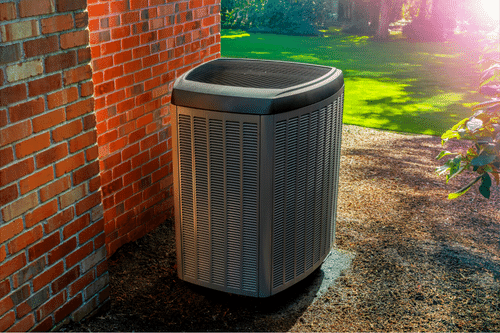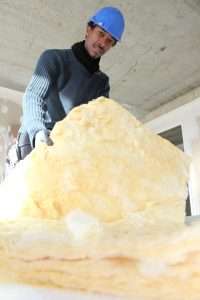When it comes to replacing your air conditioning system in Southern California, there are many factors to consider beyond just the cooling capacity and cost. Environmental concerns play a significant role in the decision-making process, as the choices we make can have a lasting impact on the world around us. In this blog post, we will explore the various environmental considerations that homeowners should keep in mind when replacing their AC systems. From understanding SEER standards and BTUs to the effects of refrigerants and greenhouse gases on the ozone layer, we will delve into how you can make a more environmentally friendly choice for your home with the guidance of the HVAC pros at Home Comfort USA.
Understanding SEER Standards for Energy Efficiency
Navigating the world of air conditioning systems can feel like decoding a complex puzzle, especially when it comes to understanding SEER standards. SEER, which stands for Seasonal Energy Efficiency Ratio, serves as a benchmark to gauge how well an air conditioning unit converts electricity into cooling power over the course of a typical cooling season. Essentially, it’s a measure that helps us understand just how energy efficient an AC system really is.
The mantra here is simple: the higher the SEER rating, the more energy efficient the unit. What this means for you is not just a potential reduction in your monthly energy bills, but also a step towards minimizing your environmental footprint. With energy efficiency at the heart of SEER ratings, choosing a system with a high rating is a smart move for those looking to contribute to a healthier planet. It reduces the demand on electricity grids, cuts down on greenhouse gas emissions, and plays a crucial role in our collective efforts to combat climate change.
When shopping for a new air conditioning system, you’ll encounter a range of SEER ratings. Recent regulations have pushed the minimum SEER rating higher, which is great news for both new buyers and the environment. However, opting for a unit that exceeds the minimum requirements can offer even greater energy savings and environmental benefits.
It’s an investment in the future of our planet, as well as the comfort and cost-efficiency of your home. As we continue to strive for more sustainable living practices, understanding and using SEER standards in choosing your next air conditioning system is a step in the right direction.
The Role of BTUs in Cooling Capacity and Environmental Impact
Understanding the concept of BTUs, or British Thermal Units, is key to selecting an air conditioning system that’s not just right for your home’s size but also kind to the environment. BTUs measure how much heat your AC system can remove from your home within an hour, essentially indicating its cooling capacity. The goal is to find that sweet spot—a unit with enough power to keep your home comfortable without overreaching, leading to excessive energy use.
Why does getting it right matter? An AC system with too many BTUs for your space can lead to unnecessary energy consumption, while one with too few won’t efficiently cool your home, also resulting in wasted energy. Both scenarios are not ideal from an environmental standpoint. Energy waste directly correlates with increased greenhouse gas emissions, as most electricity still comes from fossil fuel sources. This means that choosing the correct BTU rating is more than a matter of comfort; it’s a significant environmental decision.
To make an informed choice, consider factors like your home’s square footage, ceiling height, window size, and even geographical location, since Southern California’s warm climate impacts how hard your AC needs to work. The HVAC professionals at Home Comfort USA can help you figure out these measurements. Remember, an AC unit that precisely fits your needs not only ensures efficient cooling but also contributes to lower energy bills and a reduced environmental footprint. It’s a win-win that requires a bit of homework but pays off in comfort and conservation.
Refrigerants and Their Effects on the Environment
In the quest to keep our homes cool and comfortable, especially in the sunny climes of Southern California, it’s vital to consider the type of refrigerants our air conditioning systems use. Refrigerants are the lifeblood of any AC system, facilitating the transfer of heat out of our homes to provide that refreshing chill we all appreciate on a hot day. However, not all refrigerants are created equal when it comes to their environmental impact.
Historically, certain refrigerants, including R-22 (also known as Freon), have posed significant environmental hazards due to their potential to deplete the ozone layer and contribute to global warming. The ozone layer acts as Earth’s sunscreen, protecting life from harmful ultraviolet radiation. When it’s compromised due to harmful chemicals, it can lead to a host of environmental and health issues, including skin cancer and cataracts in humans, as well as adverse effects on wildlife.
Thankfully, advancements in technology and environmental regulations have led to the development and adoption of more eco-friendly refrigerants, such as R-410A. These modern refrigerants are specifically designed to have a lower environmental impact, offering an effective cooling solution without the associated risks of ozone depletion and significantly reduced contributions to global warming.
As you consider replacing your AC system, opting for units that use these environmentally responsible refrigerants is a tangible step you can take toward mitigating environmental damage. Home Comfort USA is here to advise you when you’re making the choice for a new AC system or unit. It’s not just about cooling your home; it’s about choosing solutions that ensure the air outside remains as clean and healthy as the air inside. This mindful approach to selecting your next air conditioning system can make a substantial difference in protecting our planet for future generations.
Impact of Contaminants and Greenhouse Gases on the Ozone Layer
The relationship between our air conditioning choices and the health of the ozone layer might not be the first thing we think about on a hot Southern California day. However, the impact of certain air conditioning systems, due to their release of contaminants and greenhouse gases, cannot be understated. These substances play a significant role in the gradual degradation of the ozone layer, a critical shield that protects the Earth from the sun’s harmful ultraviolet rays.
Greenhouse gases, such as carbon dioxide and methane, are notorious for trapping heat in the Earth’s atmosphere, contributing to global warming. This warming effect, in turn, influences the efficiency and operation of our AC units, often resulting in increased energy consumption and higher emissions. On the other hand, certain AC refrigerants, when released into the atmosphere, can directly harm the ozone layer, leading to increased exposure to UV radiation with profound effects on ecosystems, wildlife, and human health.
Recognizing the environmental implications of these emissions encourages us to consider air conditioning systems that are designed with eco-friendly technologies. These systems minimize the release of harmful refrigerants and greenhouse gases, safeguarding the ozone layer and contributing to a healthier planet. By opting for such options, we not only enhance our immediate living environment but also play a part in the global effort to protect and preserve our atmosphere for future generations.
Energy-Efficient Options to Curtail Energy Consumption
Embracing energy-efficient air conditioning systems is more than a step towards reducing your monthly expenses; it’s a leap towards a sustainable future. These innovative systems are crafted with the environment in mind, featuring cutting-edge technology that minimizes energy use while maintaining optimal comfort.
Variable speed compressors, for instance, adjust cooling output to precisely match your home’s needs, avoiding the energy waste associated with traditional, fixed-speed units. Additionally, programmable thermostats offer the convenience of setting your AC to operate most efficiently during different times of the day, ensuring you’re not cooling an empty house.
By choosing an AC system equipped with these and other energy-saving features, you not only contribute to a significant reduction in carbon footprint but also join the movement towards a cleaner, more sustainable planet. Remember, every energy-efficient choice we make has a ripple effect, promoting a healthier environment for generations to come.
The Importance of Professional Consultation and Installation
Embarking on the journey to replace your air conditioning system with a more environmentally friendly option is both commendable and complex. Navigating this terrain can be simplified and made more efficient with the guidance of an HVAC professional from Home Comfort USA. Our expertise is not just about ensuring your system is installed correctly but also about tailoring the choice of your air conditioning unit to both your specific home needs and the well-being of our planet.
A Home Comfort USA HVAC expert brings to the table a deep understanding of the latest energy-efficient technologies and can help you decode the complexities of SEER ratings, BTUs, and eco-friendly refrigerants. They can perform a comprehensive assessment of your home’s layout, size, and cooling requirements, ensuring that the AC system you select is neither overpowered (leading to unnecessary energy use) nor underpowered (which could compromise comfort and efficiency).
Moreover, Home Comfort USA’s input is invaluable in identifying air conditioning solutions that offer advanced features, such as programmable thermostats and variable speed compressors, which can further reduce your carbon footprint and contribute to a more sustainable environment. Their skillful installation guarantees that your system operates at peak efficiency, minimizing any potential environmental impact.
In essence, partnering with Home Comfort USA’s HVAC professionals is not only a smart choice for maximizing comfort and efficiency but also a step towards contributing positively to environmental conservation efforts. It’s a collaboration that ensures your cooling needs are met responsibly, aligning with your values of caring for the planet. Give us a call or book an appointment online today.






